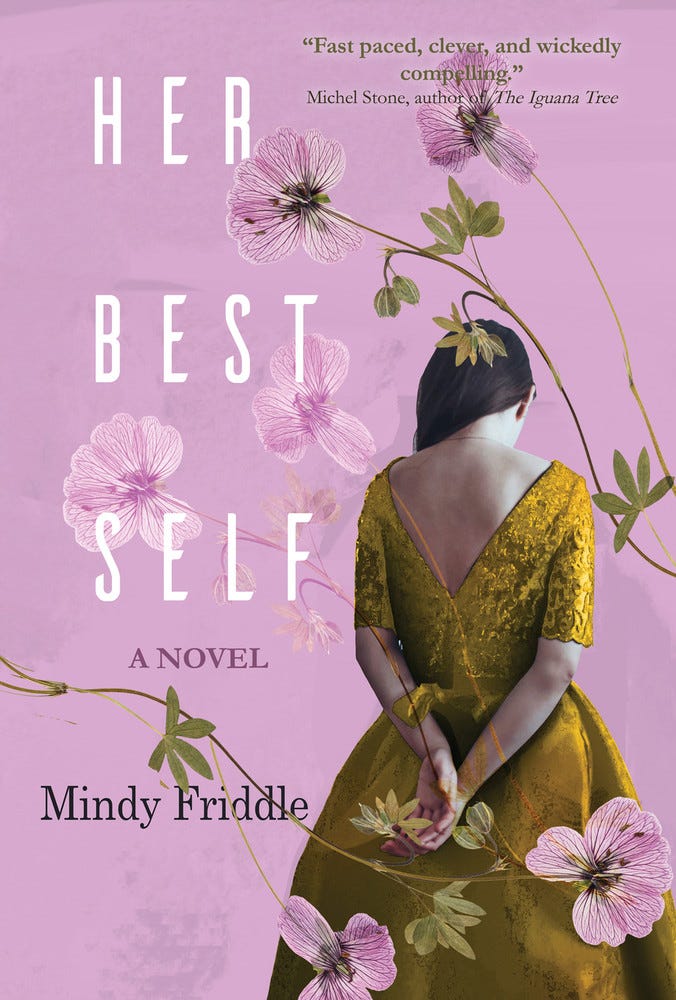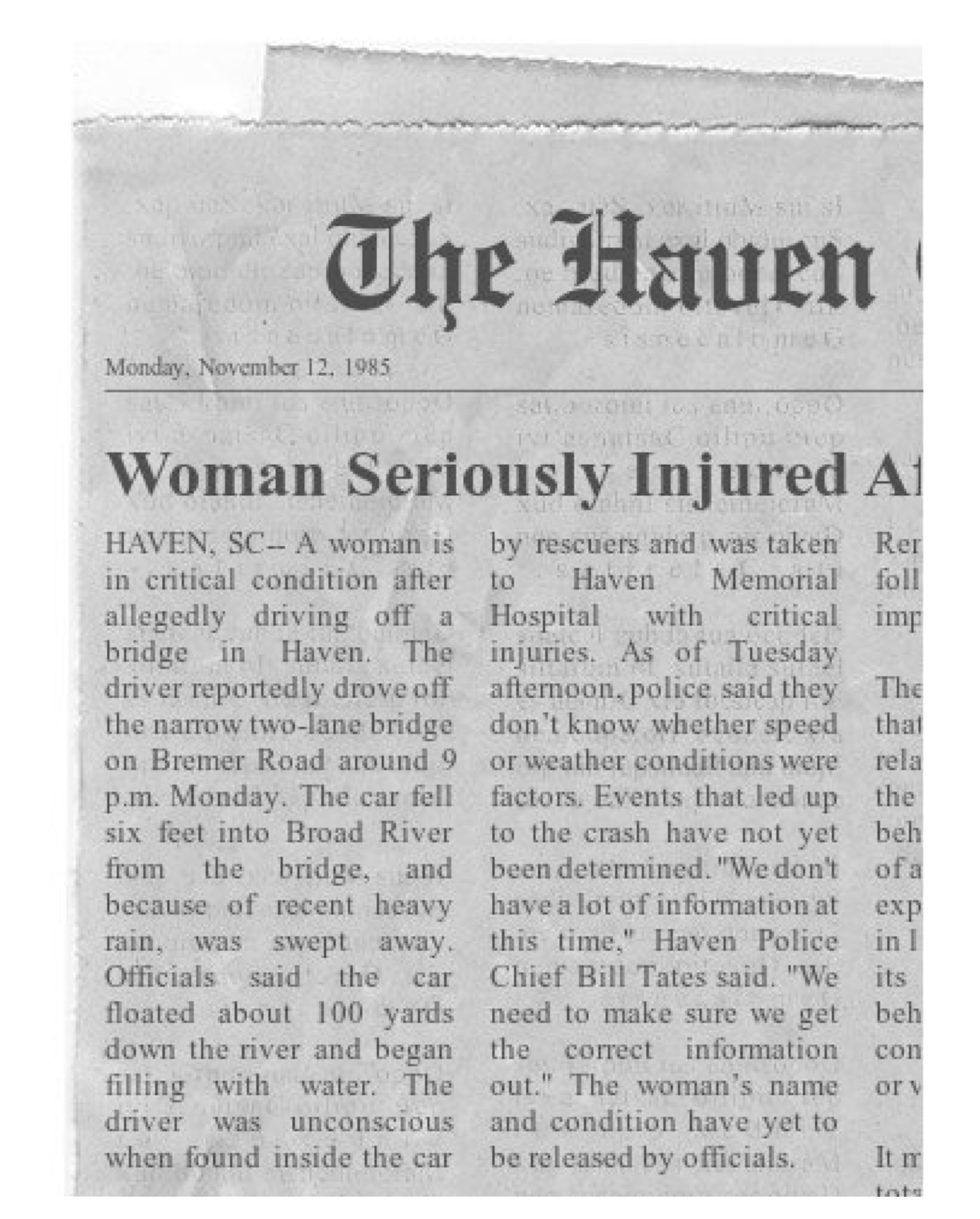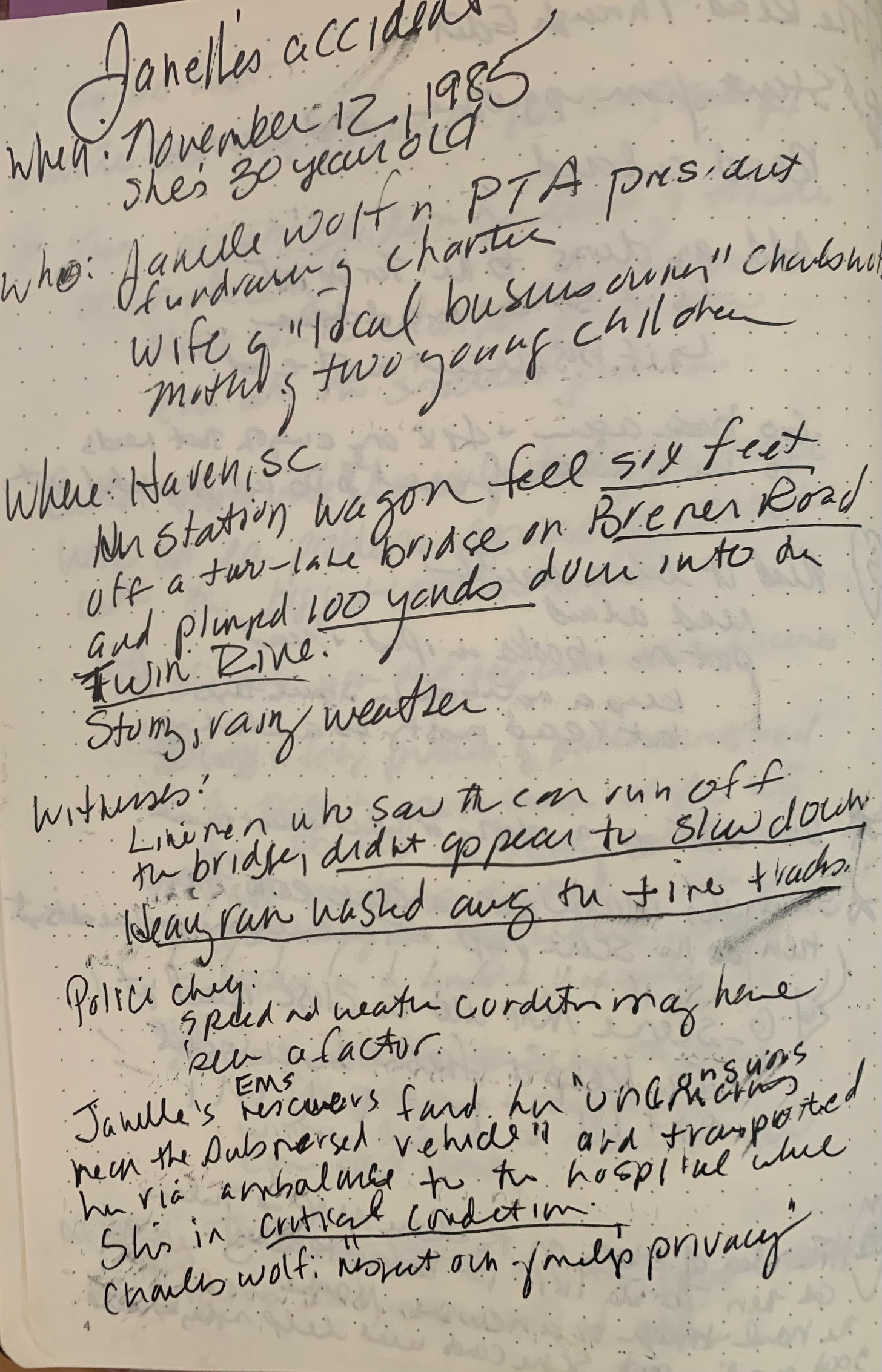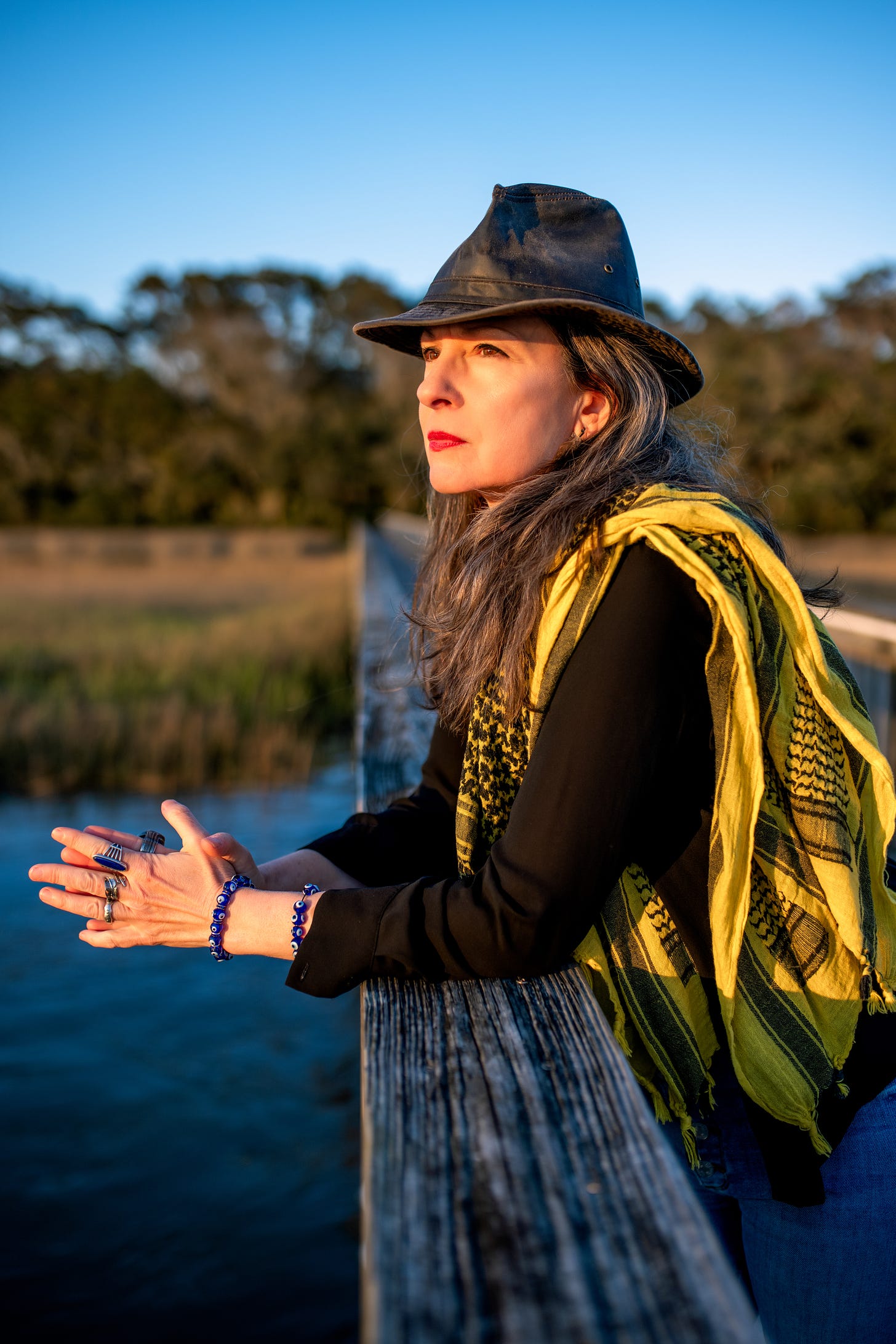
Discover more from Write More, Be Less Careful
how novelist Mindy Friddle uses intertextuality to deepen her characters' backstory
newspaper articles, text messages, NextDoor posts and more as a gateway to narrative
Today’s post is in the tending section, which is a mix of essays and interviews about creative practice that do a deeper dive into a particular craft element or process question. Previously in this space we’ve talked about pitching, caring for our attention, and approaches to creative research. Today’s newsletter features Mindy Friddle, whose novel Her Best Self will be out May 21st.
I’d love your suggestions of other writers and artists to feature in this series, so feel free to email me with ideas. You can just hit “reply” to this newsletter.
😎🥳️a little note before we hear from Mindy: I’m teaming up with Jenn McClearen, who writes the great newsletter Publish Not Perish, to host a summer planning party via zoom on Wednesday, May 22nd from 7-8pm eastern. the change in schedule that often comes with the summer can be exciting but can also throw you for a loop, and Jenn and I have some great practical advice about how to make the most of your writing life in the coming months—while still getting to lounge by the pool, or whatever your vibe might be this summer. you can read more about the party here, if you like, or just go ahead and register here to join us. (and if you can’t make the party, I’ll send a recording a week or so afterward.) 🥳️😎
Today’s essay is a guest post by novelist Mindy Friddle, whose new novel Her Best Self tells the story of Janelle Wolf, a woman whose life has been upended by a mysterious car accident. As the book unfolds, we follow multiple characters who each have their own view on Janelle, and we uncover the ugly truth beneath the accident. This multiple perspective is further enriched by a series of newspaper articles included throughout the book, which tell the story of Janelle before her accident and hint at the troubling truth below the surface of this pretty southern town.
Below, Mindy describes how those newspaper articles came to be, and she offers two prompts for writers interested in trying out this intertextual approach for themselves.
Mindy, on using intertextuality in fiction
The quotidian details of life often inspire ideas for fiction; when you're building backstory for characters, you just need to know where to look. While drafting my latest novel, Her Best Self, I wanted to know more about the accident in protagonist Janelle Wolf’s past that completely upended her life. So did Janelle.
I’d written several chapters from Janelle’s perspective, and I’d discovered she’d barely survived an accident three decades previously when her car ran off a bridge. Until that catastrophic night, Janelle was known as a loving mother, an adored wife, a career woman, and a force in her community—a small town in Haven, South Carolina. Because she suffered a traumatic brain injury in the collision, she has little recall about the circumstances surrounding the mysterious accident, and she’s horrified at the rumors— that she’d tried to take her own life: “To some in Haven, I became the woman who had everything, who dared to be ungrateful, willing to end it all. To others, who averted their eyes at my stunted recovery, I became a shadow of what I once was, a creature to be pitied.”

My reporter’s instincts kicked in. As a freelance journalist, I’ve covered everything from hard news to frothy lifestyle features, so as a novelist I took notes as if I were on the scene of Janelle’s accident. In an article I drafted, I clarified the date and time, the name of the bridge and river, the weather, the direction Janelle’s car was headed. I imagined interviewing witnesses and authorities; I included a quote from the police chief.

Returning to the manuscript, it occurred to me to open the novel with that article, headlined “Local Woman Seriously Injured After Car Plunges Into River.” As a prologue, the article provides a cut-and-dried version of the accident. Janelle would add emotional context around those facts, as she grapples with what happened the night she lost her best self, the one she calls Janelle Before.
As I revised Her Best Self, I decided to intersperse other articles from the fictional small town newspaper, the Haven Observer. A profile of Janelle in the past, before the accident, “Janelle Wolf: Wife, Mother, Pillar of the Community,” reveals more about Janelle’s family, career, and community activities, and why she was once viewed by many in her town as the woman who had everything.
An interview with her frenemy, “Mary Rex: A Politician’s Wife Avoids the Spotlight,” a dozen years after Janelle’s accident, saddens and infuriates Janelle when she finds it a scrapbook, as she attempts to piece together the days leading up to her accident. Later in the novel, I included brief news articles about a missing person investigation, providing facts about the incident in an efficient way— the who, what, when, where, and how. The characters would provide the why, the human element behind those facts.

The fancy term for embedding these articles in the novel is intertextuality, the shaping of a text's meaning by another text. No doubt you’ve read novels that include letters and diary entries. But novels can include all sorts of texts, such as social media posts, poems, podcast transcripts, obituaries, medical records, and legal documents. Recent novels have run the gamut of intertextuality, from the Hollywood tabloids and paparazzi flashes that illustrate a reclusive movie star’s curated public persona in The Seven Husbands of Evelyn Hugo, to the posts by Chimamanda Ngozi Adichie’s protagonist Ifemel, who moves to the United States and blogs about her experiences as a non-American Black woman in Americanah, to the magnificent poems by a fictional Irish poet who deserts his family, which Anne Enright herself wrote for The Wren, The Wren. Jennifer Egan’s award-winning A Visit from the Goon Squad features one chapter told entirely through a PowerPoint presentation.
Intertextuality fascinates me, so when I come across any sort of document that piques my curiosity and hints at a human element I’d like to explore, I keep it in a file, to spark ideas about characters, noting how the texts might be included in a fictional tale.
For instance, I recently reported on a lawsuit about a woman suing a nurse for illegally accessing her medical records. The woman was dating the nurse’s ex-husband! The nurse had no idea the medical database she’d accessed recorded every instance of her snooping. What was the nurse looking for? A medical diagnosis to shame the girlfriend? Pregnancy or STDs? Or just morbid curiosity? The legal complaint hinted at the jealousy and turmoil in legalese language, a situation ripe for exploring in fiction.
if Write More has helped you in your creative life, you can click the little ❤️️heart❤️️ at the top or bottom of this post to help other folks find us!
Another rich source of material are neighborhood apps such as Nextdoor, which are often full of snark and drama. Here’s a thread from a neighborhood app I added to my idea file:
Ms. A: Someone cut my prize peonies! These new people moving in aren’t raised right.
Ms. B: It’s all those AirBandB people. The neighborhood is filled with strangers from God knows where.
Mr. C: People are stealing my cats.
Mr. D: You mean literally a cat burglar?
Mr. C: I mean someone is stealing my cats!
Mr. D: LOL. Cat thieves! K, dude.
This exchange provides humorous insight into a suspicious, territorial group—fertile ground for fiction.
if you’d like to try it out . . .
Here are two exercises to generate new work or deepen works in progress through intertextuality:
1. Consider using all sorts of texts to inspire fiction. Local news, intriguing podcasts, community newsletters, and any documents that could serve as a springboard for characters, such as:
School board minutes from a raucous meeting about book banning. Could the ready-made conflict and strident voices serve as suburban satire, e.g. Tom Perrotta’s Little Children? Are marriages and friendships tested? Or perhaps the issue forges unlikely alliances?
An obituary that compresses the extraordinary arc of a life. Extrapolate from the facts and accomplishments to write about a character.
2. On the other hand, try creating your own document to explore an idea or find out more about a character you’re writing about.
Conduct an interview with a character. Will this Q&A hint at a secret your character is withholding? A sense of pride or shame that hints at inner conflict?
Write a character’s will and last testament. Does this heal divisions or create new fissures? Will a surprise bequest to a stranger astonish the character’s family? Or perhaps the dearly departed has left his entire fortune to an infamous organization that shocks and outrages your characters. Turmoil ensues.
Create a DNA report that reveals a new sibling. How do your characters respond to this new family member?
These sorts of texts can reveal conflict, illustrate misunderstandings, and illuminate yearnings. Chances are when you create such documents, you’ll find out more about your characters’ motivations. And you just might include your created text in your story or novel as well.
Mindy Friddle's latest novel, Her Best Self, is forthcoming from Regal House Publishing on May 21, 2024. She is the author of Secret Keepers, (winner of the Willie Morris Award for Southern Fiction) and The Garden Angel (SIBA bestseller, selected for Barnes & Noble's Discover Great New Writers). The South Carolina Arts Commission awarded Mindy a prose fellowship, and she has twice won the state’s Fiction Prize. Her stories and essays have appeared in numerous journals. She holds an MFA from Warren Wilson and lives on Edisto Island, South Carolina.
Find Mindy at www.mindyfriddle.com, on Instagram at @mindyfriddle, or subscribe to her newsletter.
You can join Mindy on her book tour this spring and summer, across the Carolinas:
Book launch at McConkeys Jungle Shack, Edisto Beach, SC | May 22 from 4-6:30pm.
"Make a Scene, Why Don't You?!" | Virtual workshop sponsored by the South Carolina Writers Association | May 23, 12-1pm ET.
In conversation with Jonathan Haupt at Pat Conroy Literary Center, in partnership with NeverMore Books, Beaufort, SC | May 23, 5pm
Piccolo Fiction Event at Blue Bicycle Books, Charleston, SC | June 1, 5pm
In conversation with Scott Gould at M.Judson Booksellers, Greenville, SC | June 4, 5:30-6:30pm.
In conversation with Dale Neal at Malaprop's Bookstore, Asheville, NC | June 5, 6pm.
Fiction Addiction's Book Your Lunch with Mindy Friddle and Caroline Cleveland, CityRange Grill, Greenville, SC | June 11, 12pm
In conversation with Michel Stone at Hub City Bookshop, Spartanburg, SC | June 12, 6pm
In conversation with Rebecca Godwin at Litchfield Books, Pawley's Island, SC | July 26
"Write Your Novel: Tips to Propel You from Inspiration to Final Draft" | South Carolina Writer Association's StoryFest 2024, Columbia, SC | September 27, 3:45-4:45pm.
Write More, Be Less Careful is a newsletter about why writing is hard & how to do it anyway. I’m so glad you’re here.
If Write More has helped you in your creative life, I’d love it if you would share it with a friend.















Love this insider peek. I'm reading the ARC of "Her Best Self" and it's fascinating to hear about Mindy's process.
An interesting way to add backstory. Thank you for sharing this.